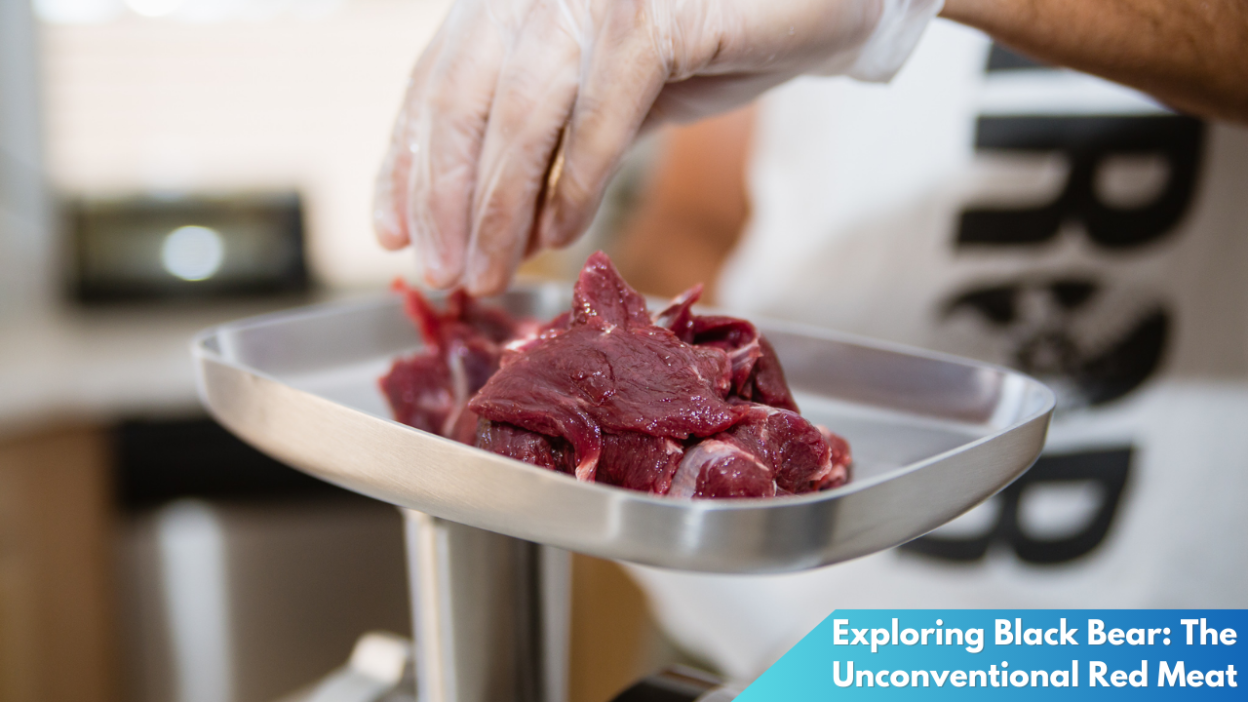In the world of culinary exploration, the search for diverse and unconventional ingredients is never-ending. Among the myriad of options, black bear meat stands out as an intriguing and lesser-known red meat choice. While it may not be a staple on most dinner tables, black bear meat is gradually gaining attention for its unique flavor, nutritional benefits, and versatility in the kitchen. This article delves into the appeal of black bear as a culinary delight, provides insights into its nutritional profile, and offers guidance on cooking techniques to prepare succulent black bear dishes.
Discovering Black Bear as a Culinary Delight

Black bear meat has been part of North American cuisine for centuries, celebrated for its rich, gamey flavor that contrasts sharply with more conventional red meats like beef or lamb. As hunting practices evolve and the movement toward sustainable and locally sourced foods grows, black bear meat is finding its way back into modern kitchens. Chefs and home cooks alike are discovering that this unconventional meat offers a distinctive taste experience, with a depth of flavor that can elevate a variety of dishes.
The texture of black bear meat is often compared to that of beef, yet its flavor profile is more robust and earthy. This unique taste can be attributed to the bear’s natural diet, which includes berries, roots, and fish. As a result, black bear meat brings a wild, aromatic essence to the table, making it an excellent choice for stews, roasts, and other hearty meals. Its distinctive character offers adventurous eaters a chance to expand their palates and embrace flavors that might otherwise go unexplored.
For those interested in responsible consumption, black bear meat presents an opportunity to engage with ethical and ecological food practices. In regions where bear populations are managed through regulated hunting, utilizing bear meat is not only a culinary exploration but also a means of supporting wildlife management efforts. This approach ensures that bear populations remain healthy and balanced, while also reducing waste and promoting sustainable food sources.
Nutritional Insights into Black Bear Meat
Beyond its culinary allure, black bear meat is also a worthwhile consideration from a nutritional perspective. Rich in protein and essential amino acids, it serves as a valuable source of nutrients for those looking to diversify their diet. The meat is relatively low in fat compared to other wild game, with a composition of unsaturated fats that are beneficial for heart health. For fitness enthusiasts or those following a high-protein diet, black bear meat can be an excellent alternative to traditional protein sources.
One of the notable nutritional aspects of black bear meat is its high iron content, which supports healthy blood function and energy levels. Additionally, it provides a range of essential vitamins and minerals, including vitamin B12, niacin, and zinc. These nutrients play critical roles in maintaining metabolic health, supporting the immune system, and promoting overall wellness. As such, incorporating black bear meat into one’s diet can help address potential deficiencies and contribute to a balanced nutritional intake.
However, it’s important to note that black bear meat must be handled and prepared correctly to ensure safety. Bears can carry trichinella, a parasite that can be transmitted to humans if the meat is not cooked thoroughly. Thus, proper cooking techniques and adherence to food safety guidelines are crucial when preparing bear meat. By following recommended practices, individuals can enjoy the nutritional benefits of black bear meat without compromising health and safety.
Cooking Techniques for Succulent Black Bear Dishes

Preparing black bear meat demands a level of culinary expertise that respects both the ingredient’s origins and its unique characteristics. The key to unlocking the potential of black bear meat lies in understanding the appropriate cooking techniques. Slow cooking methods, such as braising or smoking, are particularly effective in tenderizing the meat and enhancing its natural flavors. These techniques allow the meat to absorb seasoning deeply, resulting in a succulent and flavorful dish.
Marinating is another effective strategy for preparing black bear meat, as it helps to tenderize the meat while infusing it with complementary flavors. Marinades that include acidic components like vinegar or citrus juice can break down the meat fibers, making the final dish more palatable and enjoyable. Additionally, spices and herbs such as rosemary, juniper, and garlic can complement the meat’s earthy undertones, providing a harmonious balance of flavors.
For those who prefer quicker cooking methods, grilling or pan-searing black bear meat can also yield delightful results. These methods require careful attention to cooking time and temperature to prevent the meat from becoming dry or tough. When executed correctly, grilling or pan-searing can produce a deliciously charred exterior while maintaining a juicy interior. Regardless of the method chosen, the importance of reaching the appropriate internal temperature cannot be overstated, as this ensures the meat is safe for consumption.
As the culinary world continues to embrace diversity and innovation, black bear meat stands as a testament to the rich possibilities that unconventional ingredients can offer. Its unique flavor, nutritional advantages, and adaptability in various recipes make it an intriguing option for those looking to expand their culinary repertoire. By exploring black bear meat with the appreciation it deserves, food enthusiasts can not only enjoy a distinctive dining experience but also contribute to sustainable and ethical food practices. Whether through slow-cooked stews, aromatic roasts, or expertly grilled cuts, black bear meat opens up a world of gastronomic exploration that is both rewarding and responsible.


